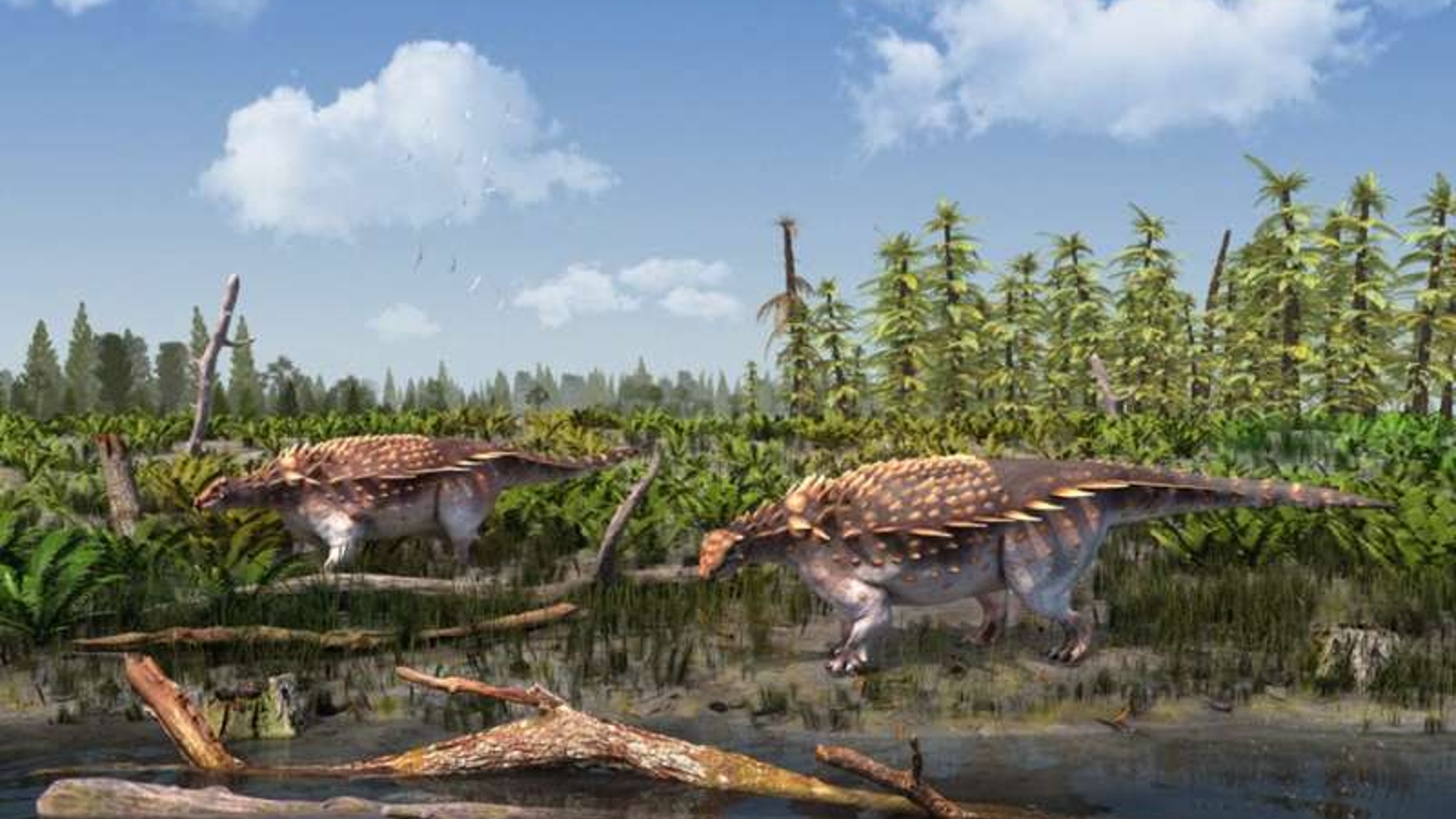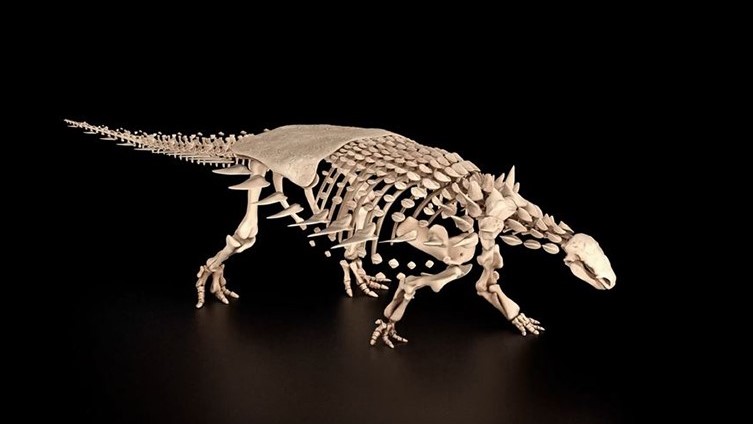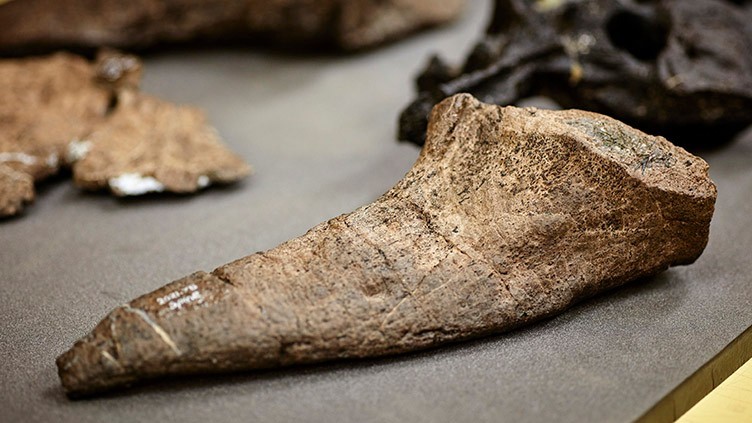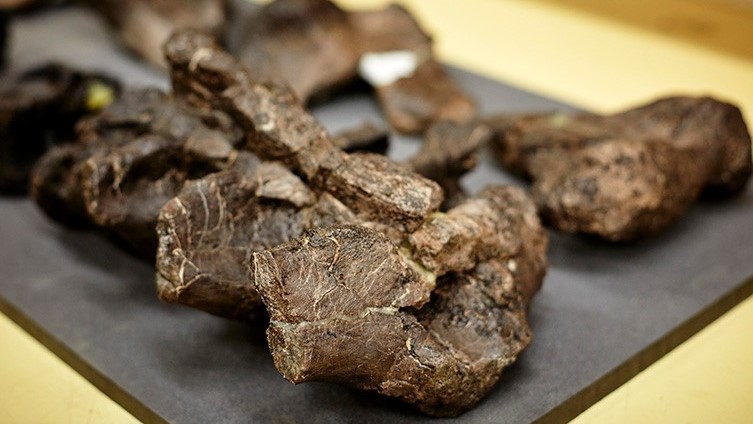
Paleontologists in the U.K. have uncovered the remains of a never-before-seen armored dinosaur with blade-like spikes that protruded from the sides of its heavily-protected body.
The newly described species, named Vectipelta barretti, belongs to the suborder Ankylosauria — a group of large herbivorous dinosaurs with four short legs, wide and flattened bodies, relatively small heads and long, sometimes club-like, tails. A majority of ankylosaurs, such as Ankylosaurus, were heavily covered in spiky armor made from bony scales, known as osteoderms, to help protect them from large predators.
The partial skeleton of V. barretti, including some of its scythe-like osteoderms, was discovered in 1993 at the Wessex Formation on the Isle of Wight off England's southern coast, and was fully excavated by a private collector the following year. Several additional bones were also recovered in the surrounding area in the late 1990s. In 2021, the island's Dinosaur Isle Museum acquired the specimen, giving paleontologists a chance to study it for the first time.
In a new study, published June 15 in the Journal of Systematic Palaeontology, researchers revealed that the remains date back around 140 million years. The team also used a computer program to recreate what a complete V. barretti skeleton would look like.
Related: 'Jousting ankylosaurs' whacked their peers with their 'sledgehammer-like tails'

The Isle of Wight is a fossil hotspot, with more than 20 different dinosaurs being uncovered there, including large sauropods and a pair of carnivorous predators with "crocodile-like faces" in 2021.
Only two ankylosaur genera, Polacanthus and Hylaeosaurus, had previously been uncovered on the island. Researchers initially thought the V. barretti remains belonged to Polacanthus, which is the most abundant ankylosaur group identified in the area. But a closer examination revealed this was not the case.
"It [V. barretti] is actually really distinct from Polacanthus," study co-author Susannah Maidment, a paleontologist at the Natural History Museum in London, said in a statement. "It has features on its neck and back vertebrae that differ, while it also has more blade-like and recurved spikes which we don't see in the Polacanthus material that we have."
The remains of V. barretti are older than the oldest Polacanthus fossils, which date to around 134 million years ago, but are younger than the youngest Hylaeosaurus fossil from 143 million years ago, further indicating it is a separate species.


The team also conducted an evolutionary comparison between V. barretti and other known ankylosaurs, based on similarities and differences between their skeletons. This revealed that V. barretti was unlikely to be a direct relative of either Polacanthus or Hylaeosaurus.
"They are really quite far apart in terms of ankylosaur evolution, so it is really very clear that this is a different species," Maidment said.
Instead, the researchers believe that V. barretti is most closely related to ankylosaurs unearthed in modern-day China. This hints at a previously unknown migration for the armored dinosaur group from Asia to Europe. However, more work is needed to confirm this hypothesis, Maidment said.
The species name, barretti, was given to the newly uncovered ankylosaur in honor of Paul Barrett, a renowned paleontologist at the Natural History Museum, who was not involved in the study.
"I'm flattered and absolutely delighted to have been recognized in this way," Barrett said in the statement. "I'm sure that any physical resemblance is purely accidental," he joked.







